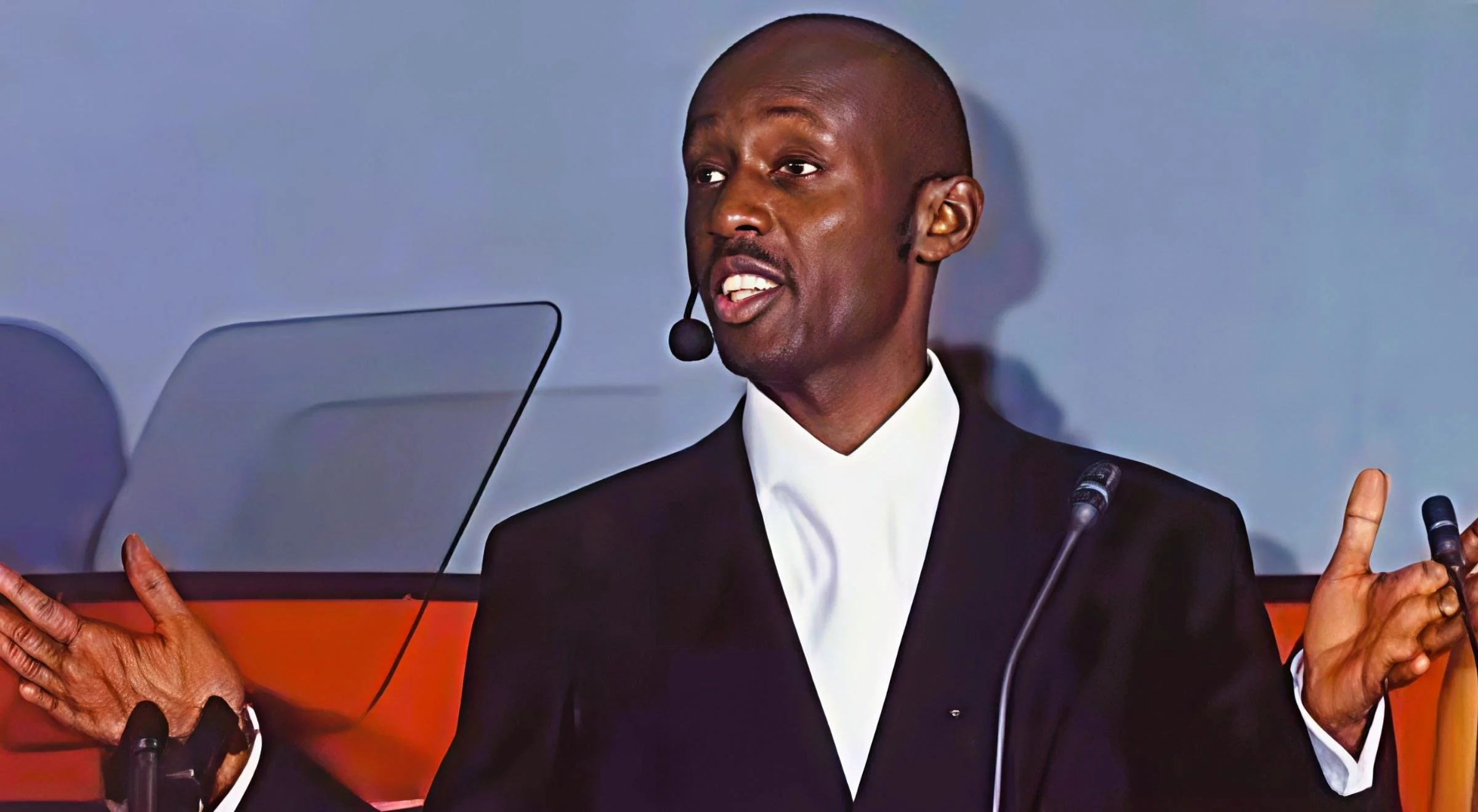“If you want to develop a leadership culture, you must give people the permission to try and the right to fail”.
Who are we?
Organisational identity
Founded in 2015, Believernomics began as a brand umbrella for social media platforms promoting organisational insight, motivational messaging, and learning resources. Since 2023, it has evolved into an empowerment consultancy specialising in leadership development, workforce dynamics, branding, and organisational change.
Career span
As the founder of Believernomics, Paul Aladenika brings more than 30 years experience to the table from the private, not-for-profit and public sectors. This includes nearly two decades operating at senior management level in local government and six years on the board of directors of a registered housing charity.
Public sector leader
A recognised senior public sector leader and manager, Paul has worked across local, regional, national, and international levels of government, contributing to policy development, strategic planning, performance management, public engagement, and organisational transformation.
In 2018, he supported a retired Justice of the Supreme Court in conducting a nationally significant Public Inquiry, and in 2020, he was a nominated lead for London’s crisis response to the Covid-19 pandemic. From 2021 to 2022, Paul served as the data lead for the pan-London pay equity initiative, ‘Tackling Race Inequality’, led by London Councils. As part of this, Paul’s work was profiled at national level.
Paul has repeatedly been appointed as a Local Authority Nominated Officer, liaising with Ofsted during statutory inspections and with the Local Government Association during corporate peer challenge. This reflects confidence is his organisational expertise and reliability under pressure. He has also collaborated with senior executives across the public and private sectors, as well as with politicians up to Ministerial level.
International assignments
In 2021, Paul was nominated to work with the Council of Europe in Strasbourg, to develop their policy on intercultural cities. Then in 2023, during a brief hiatus from local government, Paul advised the British Virgin Island’s Constitutional Review Commission on governance reform and was acknowledged for his work in the Commission’s final report.
Leadership development and recognition
Paul has a well established reputation as a developer of valued leadership talent and builder of highly productive teams. Ten of those who have worked under his tutelage have gone on to senior executive or senior leadership roles in the civil service, public or private sectors.
Paul is an alumni of the prestigious London Councils, London Leadership Programme, acknowledging his leadership capability and contribution to public service excellence. Paul has also received personal recognition for his work, with two Employee of the Year awards and a nomination for Leader of the Year by separate employers.
Public speaking
Over the years, Paul has built a strong reputation as an accomplished and engaging public speaker. He has been invited to host and compere awards ceremonies, demonstrating his ability to connect with diverse audiences and lead high-profile events with confidence and authority.
Paul is also a TEDx speaker, delivering the talk “How Leaders Show Kindness in Toxic Space”, where he explored the role of empathy, integrity, and resilience in challenging organisational environments. In addition, he has presented to international online audiences through the public-sector social learning network Apolitical, sharing practical insights on effective leadership communication and professional writing.
Social media presence and thought leadership
As the principal at Believernomics, Paul develops content for various social media platforms including: Facebook, YouTube, TikTok, Instagram and X formerly Twitter. On X, the @Believernomics handle has received millions of impressions, been 'reposted' or 'liked' more than 20,000 times and attracted many thousands of followers. In 2017, renowned entrepreneur Evan Carmichael ranked Believernomics amongst the top 100 leadership experts to follow on Twitter.
In addition, Paul writes a weekly blog, which is published on this website as well as on Medium.com and is host and producer of the 11th Thing Podcast. As a podcast host he has interviewed esteemed academics, award winning authors, business executives, consultants to Fortune 500 and FTSE 100 companies, decorated senior military leaders and senior civil servants including a US diplomat.
Today, Believernomics leverages this breadth of leadership experience and thought leadership presence to empower organisations navigating change, building resilient teams, and developing leaders equipped for the future.
What are the core ideas of Believernomics?
In addition to the Believernomics empowerment model, there are a number of core ideas that shape and drive our thinking. Examples of these are summarised below.
The four organisational economies
At a fundamental level, every organisation is comprised of four anchor economies. These are as follows:
The economy of experience - focuses on the way in which an organisation harnesses leadership capacity and its ability to translate this into leadership capital. In the economy of experience, there is a virtuous cycle of improvement because leaders empower others to empower others.
The economy of expectation - focuses on the strength of an organisation’s brand and its ability to leverage brand value to deliver sustainable results. It is built on the premise that an organisation’s brand is a reflection backward, not a projection outward.
The economy of enterprise - focuses on the capacity to harness creative capabilities of the workforce. An essential component for the economy of enterprise to flourish is a culture of experimentation. This, in turn, must be underpinned by the permission to try and the right to fail.
The economy of effort - focuses on the ability of an organisation to tap into and mobilise the ‘social economy’ of its workforce. The predicate here is that directed effort drives compliance, but discretionary effort nurtures discipline.
The four organisational economies
The the six A’s of success
The most successful organisations and their leaders exhibit six common characteristics. These are as follows:
Ambition - the aspiration, desire and passion that drive an organisation and their leaders to achieve their objectives and primary purpose.
Ability - the knowledge, understanding and skills that an organisation and its leaders develop or acquires.
Aptitude - specific talents or capabilities for which an organisation and its leaders demonstrate particular skill.
Attitude - an organisation’s and its leadership posture and bearing, demonstrated by its opinions, positions and perspectives.
Application - an organisation’s capacity to focus collective effort of its leadership towards the achievement of productive outcomes.
Accountability - ownership (including the willingness to accept consequences) for an organisation’s results and outcomes.
The six facets of organisational anatomy
The chart below illustrates the six facets of ‘organisational anatomy’. The composition of these elements are summarised as follows:
Consciousness - organisational awareness, particularly the extent to which it shapes thinking, reasoning and the application of logic
Comprehension - an organisation’s ability to apply understanding in the face of both complexity and ambiguity.
Conviction - the sum total of an organisation’s beliefs, values and driving principles.
Conduct - the way in which an organisation behaves, its capacity for discipline, individual responsibility and collective accountability.
Competence - an organisation’s ability to galvanise effort to meet objectives and achieve intended outcomes.
Communication - the way in which an organisation conveys intentions (particularly the extent to which this is done in an open and transparent way).
The three building blocks of organisational branding
A brand is a simple and straightforward construct that is comprised of the following building blocks or ‘pyramids’:
Brand perception reflects the integrity and credibility possessed by a brand, as viewed by its customers.
Brand reception reflects the level of confidence and trust that customers place in a brand. In other words, if it is ‘perceived’ positively, it will be ‘received’ positively as well.
Brand projection is a measure of ‘reach’. Specifically, how influential, persuasive and impactful a brand has become.
How do we make a difference?
The Believernomics organisational empowerment model is unique and unconventional. The model and underpinning methodology are based on the premise that every organisation is comprised of four ‘anchor economies’.
Our innovative approach helps organisations to understand how their ‘anchor economies’ work as well as how they can stimulate and optimise them to perform more effectively.
At Believernomics, we use the capabilities that an organisation already has, in a way that they haven't thought of, in order to realise the potential that has always been there.
Please click on the link below to find out more about how we work with organisations to deploy the Believernomics model.
Work with Believernomics
Here are five reasons why your organisation would benefit from working with Believernomics:
An uncompromising focus on outcomes - our approach is designed to help your organisation to achieve optimum results.
Wide-ranging knowledge and depth of experience - our approach is built upon insights and learning gained over several decades.
Out of the box creativity - our approach to ‘organisational empowerment’ isn’t just different, it is unique.
A commitment to sustainability and follow through - our approach is geared towards building strong and enduring relationships, not finding the next client.
Flexible and scalable deployment - our approach is applicable to any size and type of organisation.









